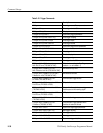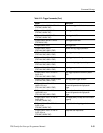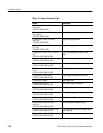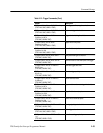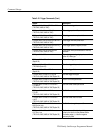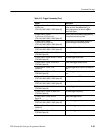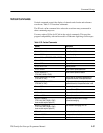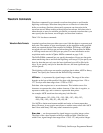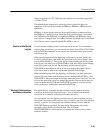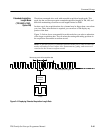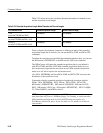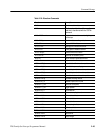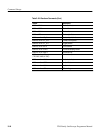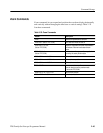
Command Groups
2–38
TDS Family Oscilloscope Programmer Manual
Waveform Commands
Waveform commands let you transfer waveform data points to and from the
digitizing oscilloscope. Waveform data points are a collection of values that
define a waveform. One data value usually represents one data point in the
waveform record. When working with enveloped waveforms, each data value is
either the min or max of a min/max pair. Before you transfer waveform data, you
must specify the data format, record length, and waveform locations.
Table 2–24 lists these commands.
Acquired waveform data uses either one or two 8-bit data bytes to represent each
data point. The number of bytes used depends on the acquisition mode specified
when you acquired the data. Data acquired in SAMple, ENVelope, or PEAKde-
tect mode uses one 8-bit byte per waveform data point. Data acquired in HIRes
or AVErage mode uses two 8-bit bytes per point. For more information on the
acquisition modes see the ACQuire: MODe command on page 2–48.
The DATa:WIDth command lets you specify the number of bytes per data point
when transferring data to and from the digitizing oscilloscope. If you specify two
bytes for data that uses only one, the least significant byte will be filled with
zeros. If you specify one byte for data that uses two, the least significant byte
will be ignored.
The digitizing oscilloscope can transfer waveform data in either ASCII or binary
format. You specify the format with the DATa:ENCdg command.
ASCII data — is represented by signed integer values. The range of the values
depends on the byte width specified. One byte wide data ranges from –128 to
127. Two byte wide data ranges from –32768 to 32767.
Each data value requires two to seven characters. This includes one to five
characters to represent the value, another character, if the value is negative, to
represent a minus sign, and a comma to separate the data points.
An example ASCII waveform data string may look like this:
CURVE<space>-110,-109,-110,-110,-109,-107,-109,-107,
-106,-105,-103,-100,-97,-90,-84,-80
Use ASCII to obtain more human readable and easier to format output than
binary. However, it may require more bytes to send the same values with ASCII
than it does with binary. This may reduce transmission speeds.
Binary data — can be represented by signed integer or positive integer values.
The range of the values depends on the byte width specified. When the byte
width is one, signed integer data ranges from –128 to 127, and positive integer
Waveform Data Formats



